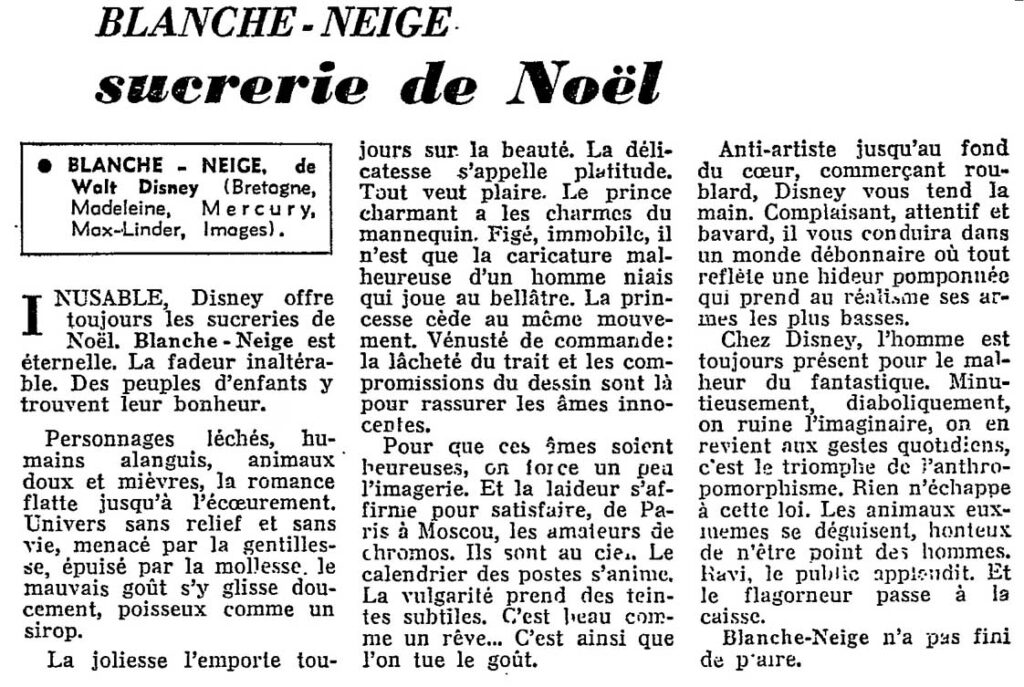
Snow White is not art
The DNA of the highly intellectual French magazine “Arts,” founded in 1952 and published until 1966, can be understood through the title of the book dedicated to it by Henri Blondet: “The Culture of Provocation.” Once this is understood, it’s no surprise that the article by a courageous anonymous author in 1962, reporting on the Christmas re-release of Snow White, takes the opposite stance of the unanimous praise to launch into a fierce diatribe against the film, with a tone as straightforward as it is devoid of arguments. The author finds the film too beautiful, too realistic, too pleasant—in short, it must be hiding a capitalist and mind-numbing agenda, and therefore it must be in bad taste. The proof: children like it. All of this is far too “common,” like the postal calendar mentioned here, a French custom in which the postman used to solicit New Year’s tips by going door-to-door selling calendars illustrated with innocuous subjects like kittens or even drawings from Disney studios.
This basic snobbery might be amusing, but it genuinely reflects the opinion of a portion of the intelligentsia, who won’t even bother to watch the film before deeming it bad.
Snow White: A Christmas Confection
by unknown journalist (December 27, 1962)
Indestructible, Disney always offers Christmas confections. Snow White is eternal, with an unalterable blandness. Generations of children find their happiness there. Polished characters, languid hands, soft and mawkish animals, the romance flatters to the point of nausea. A world without depth and life, threatened by kindness, exhausted by softness. Bad taste seeps in slowly, sticky like syrup.
Prettiness always triumphs over beauty. Delicacy is called platitude. Anti-artistic to the core, everything aims to please. The charming prince has the appeal of a mannequin. Rigid, immobile, he is nothing more than the unfortunate caricature of a foolish man pretending to be a handsome lover. The princess follows the same pattern. A beauty on command: the cowardice of the line and the compromises of the drawing are there to reassure innocent souls.
To keep these souls happy, the imagery is slightly forced. And ugliness asserts itself to satisfy, from Paris to Moscow, the lovers of trinkets. They are in heaven. The postal calendar comes to life. Vulgarity takes on subtle tones. It’s beautiful like a dream… And that’s how taste is killed.
Anti-artistic to the core, cunning merchant, Disney extends his hand to you. Obliging, attentive, and talkative, he will lead you into a benign world where everything reflects a pampered hideousness that borrows from realism its basest weapons. At Disney, man is always present for fantastic misfortune. Minutely, diabolically, the imagination is ruined, daily gestures are narrowed, it’s the triumph of anthropomorphism. Nothing escapes this law. The animals themselves disguise, ashamed of not being men. The postal calendar comes to life. Happy, the audience applauds. And the sycophant cashes in. This is how Snow White has not stopped pleasing.

